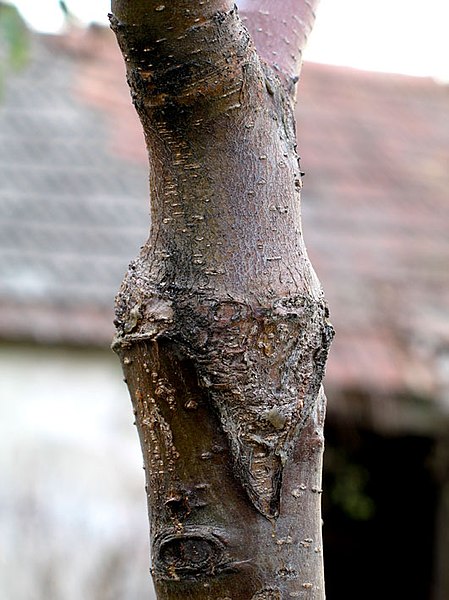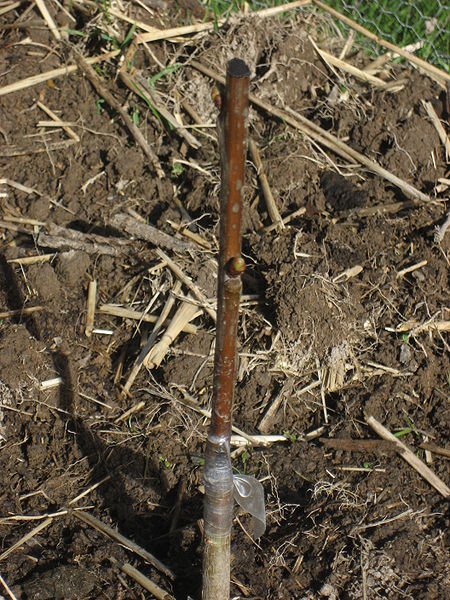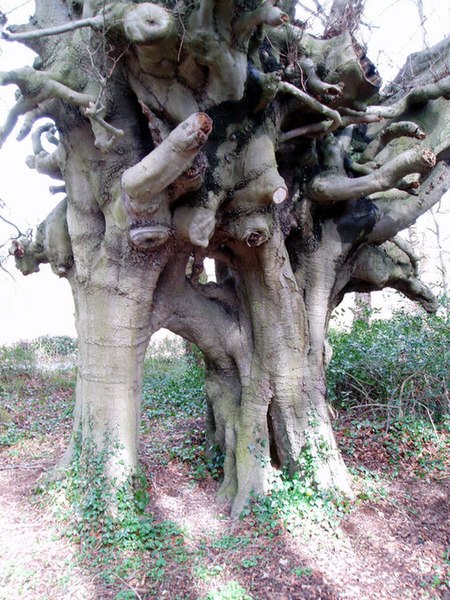Grafting or graftage is a horticultural technique whereby tissues of plants are joined so as to continue their growth together. The upper part of the combined plant is called the scion while the lower part is called the rootstock. The success of this joining requires that the vascular tissues grow together. The natural equivalent of this process is inosculation. The technique is most commonly used in asexual propagation of commercially grown plants for the horticultural and agricultural trades. The scion is typically joined to the rootstock at the soil line; however, top work grafting may occur far above this line, leaving an understock consisting of the lower part of the trunk and the root system.
Cherry tree, consolidated "V" graft
Tape has been used to bind the rootstock and scion at the graft, and tar to protect the scion from desiccation.
A grafted tree showing two differently coloured blossoms
Graft particular to plum cherry. The scion is the largest in the plant, due to the imperfect union of the two. It can be seen on the enlarged trunk: this accumulation of starch is an indication of imperfection.
Inosculation is a natural phenomenon in which trunks, branches or roots of two trees grow together in a manner biologically similar to the artificial process of grafting. The term is derived from the Latin roots in + ōsculārī, "to kiss into/inward/against" or etymologically and more illustratively "to make a small mouth inward/into/against"; trees having undergone the process are referred to in forestry as gemels, from the Latin word meaning "a pair".
Beech tree trunks conjoined
A "husband and wife" blackthorn (Prunus spinosa) at Lynncraigs farm, Dalry, North Ayrshire, Scotland.
The John Wesley tree
Acer pseudoplatanus showing inosculation








